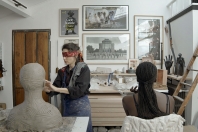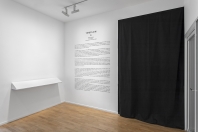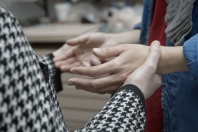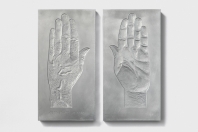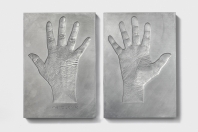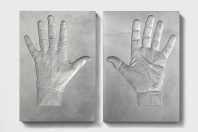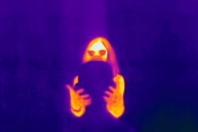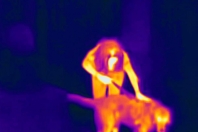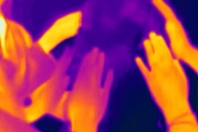Projet Phenix
Phenix revives the tradition of portraiture and explores the intimate relationship between artist and model. Prune Nourry invited eight visually impaired people to pose in her studio. Blindfolded, without ever seeing them – not before, during or after the project – she created a bust of each model, simply through touching and listening.
The models come from vastly different backgrounds. Some are blind since birth, others lost their sight through an accident or illness. All have however one thing in common: they have succeeded in overcoming their disability through their profession or voluntary work. Prune Nourry began by modelling the portraits in clay before moulding and casting them in fired clay and then firing them using the traditional technique known as Raku. Originally from Japan, the technique involves immersing the burning sculpture in ash as soon as it comes out the kiln. Like a phenix rising from its ashes, each portrait thus becomes a metaphor for rebirth.
Prune Nourry has still not seen the portraits with anything other than her hands. Plunged into total darkness, the show invites visitors to share the same experience as the artist. Following a carefully marked-out exhibition itinerary, based on standard guidance systems for the blind and visually impaired, everyone is invited to discover the eight works using their sense of touch. Thanks to tactile guide paths and a rope stretched between the busts, visitors are free to explore each of the sculptures with their hands. Recordings of conversations between the artist and her models are also played above each work, creating the sensation of immersion in the intimacy of the studio and the long posing sessions.
An experimental short film by Vincent Lorca and Prune Nourry features halfway through the exhibition. The film, which is accessible through audio description, takes visitors deeper into the world of the visually impaired. Without ever revealing faces or works, it puts the focus on the material and on hands as well as the complicity between the artist and her models.
The artist uses the walls to present new works inspired by the magnificent technique of the books at the Centre des Monuments Nationaux for the blind and visually impaired, and embossed with the help of a printer specialized in Braille. The pieces represent the models’ hands, their lifelines acting as another form of symbolic portraits. Here we find some of the artist's recurring symbols: the hand as a tool and the mould as the matrix.
Link to recordings:


